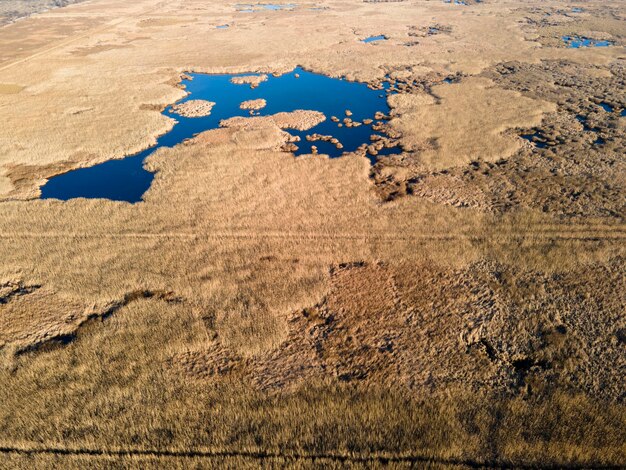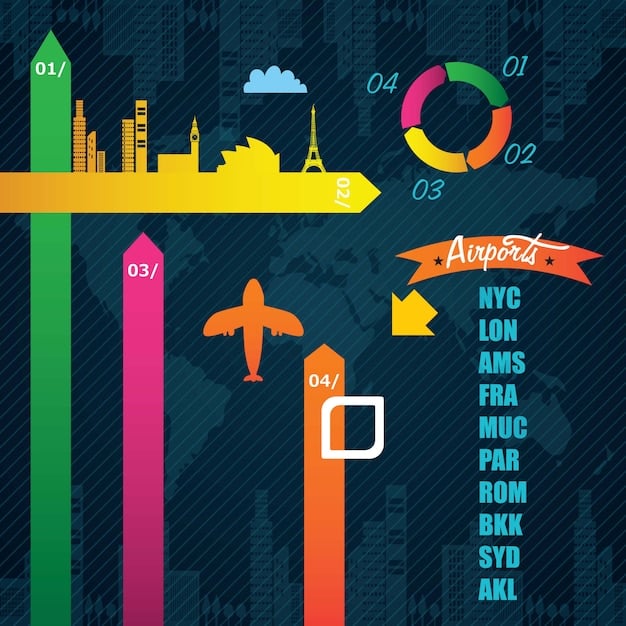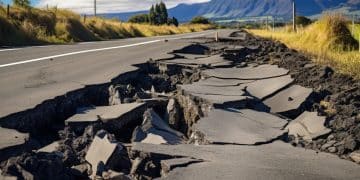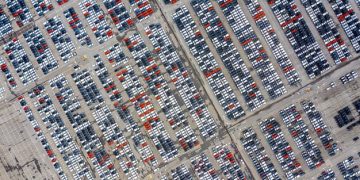Climate Change & Displacement: A Data Analysis of US Internal Migration

The impact of climate change on US internal displacement is increasingly evident through data-driven analysis, revealing a disturbing trend of climate-induced migration within the country, driven by extreme weather events and environmental degradation.
The intensification of extreme weather events and the gradual degradation of environmental conditions are no longer distant threats but present-day drivers of internal displacement within the United States. Our data-driven analysis delves into the impact of climate change on US internal displacement, aiming to provide a clearer understanding of this increasingly relevant issue.
Understanding Climate Change as a Driver of Internal Displacement
Climate change, often perceived as a gradual environmental shift, is increasingly manifesting as an immediate catalyst for human displacement. This section explores how changing climate patterns are directly contributing to internal migration within the United States.
As temperatures rise and extreme weather events become more frequent and intense, communities across the US are facing unprecedented challenges. The ability to live and thrive in certain regions is decreasing, forcing populations to relocate.
Rising Sea Levels and Coastal Retreat
Rising sea levels are among the most visible and threatening aspects of climate change, leading to increased flooding and erosion in coastal communities. These changes have substantial implications for residents in these areas.
- Erosion and inundation damage homes and infrastructure, rendering areas uninhabitable.
- Saltwater intrusion contaminates freshwater sources, impacting agriculture and drinking water.
- Coastal communities are forced to consider managed retreat, a planned relocation of residents and infrastructure.

Extreme Weather Events and Their Aftermath
The United States has seen a surge in extreme weather events, including hurricanes, wildfires, and droughts, each contributing to the displacement of communities.
- Hurricanes cause extensive damage through wind, flooding, and storm surges, forcing immediate evacuations and long-term displacement.
- Wildfires destroy homes, businesses, and entire communities, leaving thousands without shelter.
- Droughts lead to water scarcity, impacting agriculture and livelihoods, eventually forcing populations to seek more sustainable environments.
These weather events not only cause immediate displacement but also lead to long-term economic and social disruptions, further incentivizing migration.
In conclusion, climate change acts as a powerful driver of internal displacement by making certain regions less habitable due to rising sea levels and increasing the frequency and intensity of extreme weather events. These factors combine to force individuals and communities to seek safer and more sustainable living conditions elsewhere.
Data on Climate-Related Displacement in the US
Analyzing quantitative data provides crucial insights into the scale and patterns of climate-related displacement across the United States. This section presents key statistics and trends that underscore the growing impact of climate change on migration.
The numbers reflect not only the immediate aftermath of environmental disasters but also highlight the long-term effects of sustained environmental degradation. Understanding these data points is essential for effective policy-making and resource allocation.
Tracking Displacement Numbers
Several organizations and government agencies track displacement related to natural disasters. Understanding their methodologies is key for interpreting the data correctly.
- The Federal Emergency Management Agency (FEMA) provides data on individuals and households receiving assistance after major disasters.
- Academic institutions and research organizations conduct studies on migration patterns and their correlation with climate-related factors.
- Non-governmental organizations (NGOs) working in disaster relief often collect data on displaced populations.
These diverse sources offer a comprehensive view of displacement trends, with each contributing specific insights.
Key Statistics on Climate Migration
Analyzing the available data reveals significant trends in climate-induced migration. The following statistics highlight some key patterns.
- Millions of Americans have been displaced by extreme weather events in the past decade.
- Coastal states are experiencing the highest rates of displacement due to rising sea levels and increased hurricane activity.
- Drought-stricken regions are seeing a reduction in population as people move to areas with more reliable water sources.
These numbers indicate a clear relationship between climate change and population movement in the US.

In summary, data on climate-related displacement in the US reveal significant trends, with millions affected by extreme weather and changing environmental conditions. Tracking these patterns is crucial for informed policy and effective disaster response strategies.
Vulnerable Populations and Environmental Justice
Climate change exacerbates existing inequalities, disproportionately impacting vulnerable populations and raising critical environmental justice concerns. This section explores how certain communities are more at risk of displacement due to climate change and the implications this has for equity.
The intersection of socio-economic factors and environmental threats creates unique challenges for marginalized communities. Addressing these challenges requires a multifaceted approach that prioritizes justice and inclusivity.
Socio-Economic Factors and Displacement Risk
Poverty, lack of access to resources, and systemic discrimination heighten the vulnerability of certain populations to climate-related displacement. Factors like these increase the impact of environmental changes.
- Low-income communities often live in areas more susceptible to flooding or other environmental hazards.
- Lack of insurance or resources to rebuild makes recovery after a disaster more difficult.
- Marginalized groups may have limited access to information, resources, and decision-making processes related to climate change adaptation.
These factors combine to increase the likelihood and severity of displacement for these communities.
Environmental Justice Implications
The unequal distribution of environmental burdens and benefits raises fundamental questions of environmental justice. It’s essential to address these inequities to ensure that climate change responses do not exacerbate existing disparities.
- Minority and low-income communities often bear a disproportionate burden of environmental hazards.
- Climate change impacts can reverse progress made in reducing inequality.
- Environmental justice requires that all communities have a voice in decisions affecting their environment and well-being.
Addressing these issues is vital for creating more equitable and resilient communities.
In conclusion, vulnerable populations face disproportionate risks from climate-related displacement due to socio-economic factors and persistent environmental injustices. Prioritizing equity in climate adaptation strategies is essential for ensuring just outcomes.
Policy and Planning for Climate-Induced Migration
Effective policy and planning are essential for mitigating the impact of climate-induced migration and ensuring that affected communities are supported. This section explores various policy approaches and planning strategies that can help address this growing challenge.
Governments, communities, and organizations must work collaboratively to create solutions that protect vulnerable populations and promote resilience.
Adaptation Strategies and Infrastructure Investments
Investing in adaptation measures and resilient infrastructure can reduce displacement risks and safeguard communities from the impacts of climate change. Such strategies are vital for protection.
- Building stronger levees and seawalls to protect coastal communities from flooding.
- Retrofitting infrastructure to withstand extreme weather events.
- Implementing water conservation measures in drought-prone areas.
These measures can help communities adapt to changing conditions and reduce displacement vulnerabilities.
Relocation Assistance and Community Support
When displacement is unavoidable, providing relocation assistance and community support is crucial for helping affected populations. This support should be comprehensive and culturally sensitive.
Offering financial assistance and housing support to displaced individuals and families is critical.
Ensuring access to healthcare, education, and employment opportunities in new locations is just as necessary.
Supporting community cohesion and social networks to ease the transition is also part of comprehensive support.
Careful planning and assistance can improve the outcomes for displaced communities.
In conclusion, effective policies and planning strategies are vital for managing climate-induced migration. These should include adaptation measures, resilient infrastructure, and comprehensive support for displaced populations, all working in concert for the best outcomes.
The Role of Climate Modeling and Prediction
Climate modeling and prediction play a critical role in understanding the future patterns of climate change and anticipating potential migration trends. This section explores how these tools can inform policy decisions and preparedness efforts.
Enhanced modeling capabilities offer insights into future risks and are essential for proactive and effective planning.
Understanding Climate Models
Climate models are complex computer simulations that project future climate scenarios. Evaluating their accuracy is key to interpreting projections.
- Models incorporate data on greenhouse gas emissions, atmospheric conditions, and ocean temperatures.
- Different models may yield varying results.
- Understanding the assumptions and limitations of these models is crucial for accurate interpretation.
The development and refinement of these models are ongoing processes.
Predicting Future Displacement Patterns
Climate models can help predict future displacement patterns by identifying areas most at risk from climate change impacts. This includes analyzing:
- Sea-level rise projections for coastal regions.
- Increased frequency and intensity of heatwaves for urban areas
- Changes in precipitation patterns and drought risks for agricultural communities.
These projections help policymakers and communities prepare for potential displacement.
In conclusion, climate modeling and prediction offer valuable insights for anticipating future displacement patterns. By using these tools effectively, communities and governments can better prepare for and respond to the challenges of climate-induced migration.
Community Resilience and Local Initiatives
Building community resilience and supporting local initiatives are essential components of addressing climate-induced displacement. This section emphasizes the importance of engaging local communities in adaptation and mitigation efforts.
Empowering communities to take ownership of their future strengthens their ability to withstand and recover from climate-related challenges.
Grassroots Adaptation Efforts
Local communities are often at the forefront of developing innovative solutions to adapt to climate change. Examples of such efforts include:
- Implementing community-based flood management systems.
- Developing drought-resistant crops and water conservation techniques.
- Creating community gardens for food security.
These efforts demonstrate the resourcefulness and adaptability of local communities.
Building Social Capital and Community Networks
Strong social networks and robust community organizations can enhance resilience to climate-related shocks. Strategies to build social capital include the following:
- Establishing neighborhood emergency response teams.
- Organizing community workshops on disaster preparedness.
- Fostering partnerships between local organizations and government agencies.
These initiatives strengthen community bonds and improve disaster response coordination.
In conclusion, community resilience and local initiatives play a critical role in preparing for and mitigating the impacts of climate-induced displacement. Supporting these efforts empowers communities to take control of their future and build more sustainable and resilient environments.
| Key Point | Brief Description |
|---|---|
| 🌊 Rising Sea Levels | Coastal communities face increased flooding and erosion, leading to displacement as homes become uninhabitable. |
| 🔥 Extreme Weather | Hurricanes, wildfires, and droughts force evacuations and long-term migration due to destruction and resource scarcity. |
| ⚖️ Environmental Justice | Vulnerable populations disproportionately suffer from climate impacts, exacerbating inequalities and necessitating just adaptation strategies. |
| 🌱 Community Resilience | Local initiatives and strong community networks are vital for adapting to climate change and mitigating displacement risks. |
Frequently Asked Questions (FAQ)
▼
Climate-induced displacement refers to the forced migration of people due to the impacts of climate change, such as extreme weather events, sea-level rise, and environmental degradation. It involves leaving one’s home or community, whether temporarily or permanently, to seek safer living conditions.
▼
Coastal regions, such as Florida, Louisiana, and the Carolinas, are highly vulnerable due to rising sea levels and hurricanes. Additionally, southwestern states like Arizona and California face displacement risks due to prolonged droughts and increased wildfire activity.
▼
Vulnerable populations, including low-income communities, minorities, and indigenous groups, often lack the resources to adapt to climate change impacts. They may reside in hazard-prone areas and have limited access to healthcare, insurance, and disaster relief, exacerbating their displacement risks.
▼
Policies should focus on both adaptation and mitigation. Adaptation strategies include investing in resilient infrastructure and providing relocation assistance. Mitigation involves reducing greenhouse gas emissions to slow climate change. Also, community engagement and social programs help a great deal.
▼
Communities can build resilience by implementing local adaptation measures, such as improving flood defenses and conserving water. Strengthening social networks, promoting education, and engaging in community-based planning are also key to foster a strong resistance against Climate change.
Conclusion
Understanding the impact of climate change on US internal displacement is critical for shaping policies that protect vulnerable populations and promote resilient communities. By analyzing available data, addressing environmental justice concerns, and investing in adaptation and mitigation strategies, the US can better manage the challenges of climate-induced migration.





